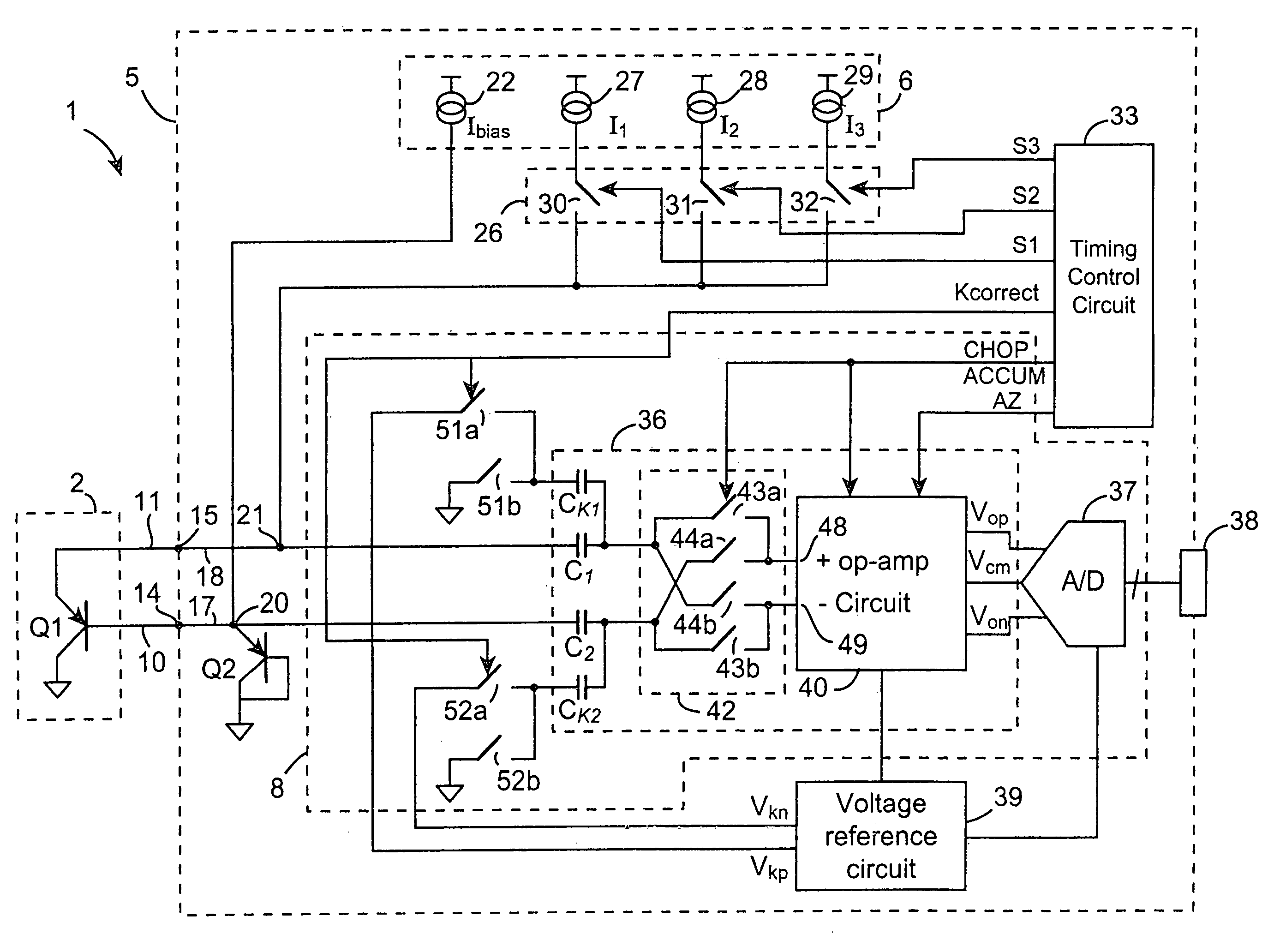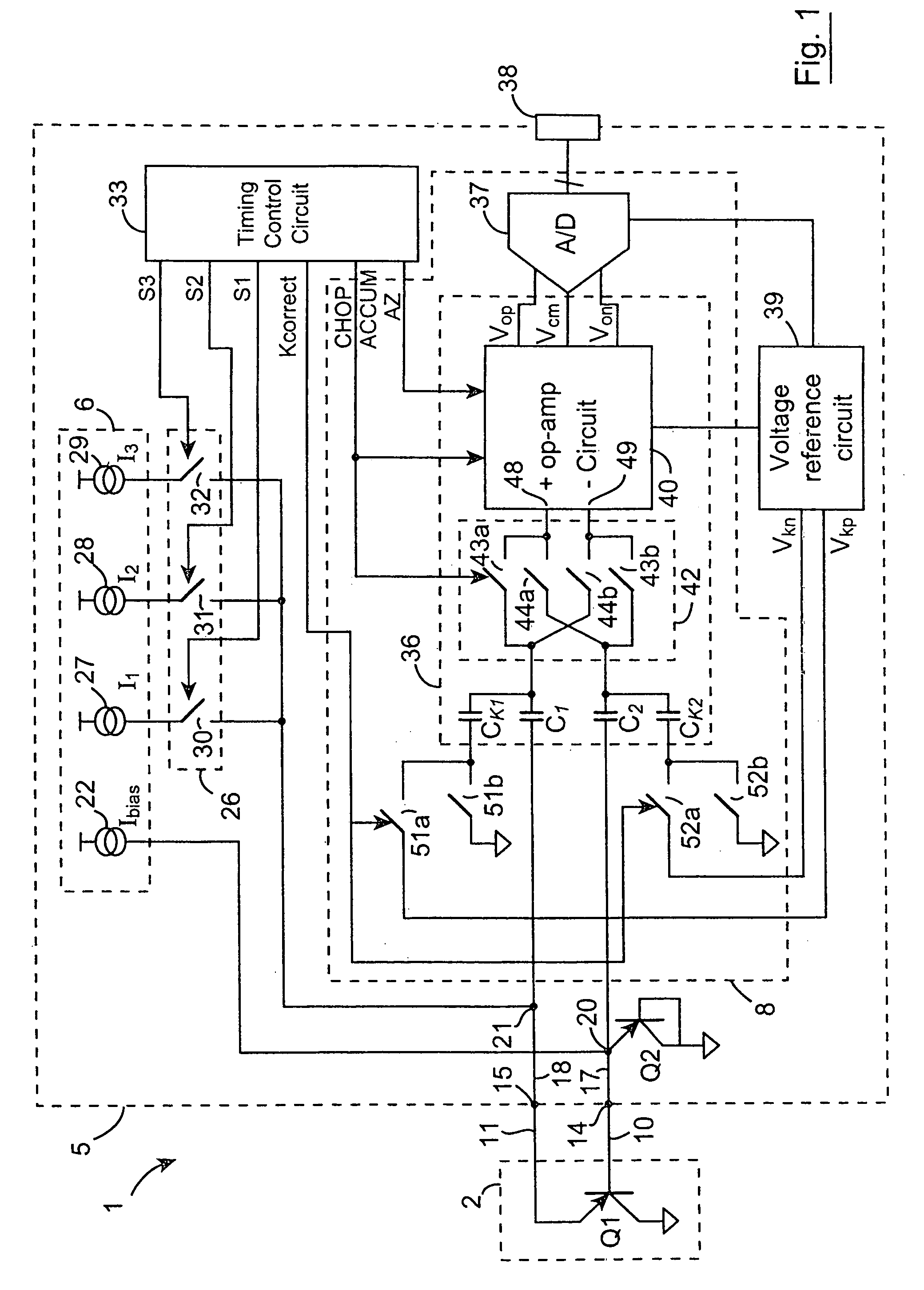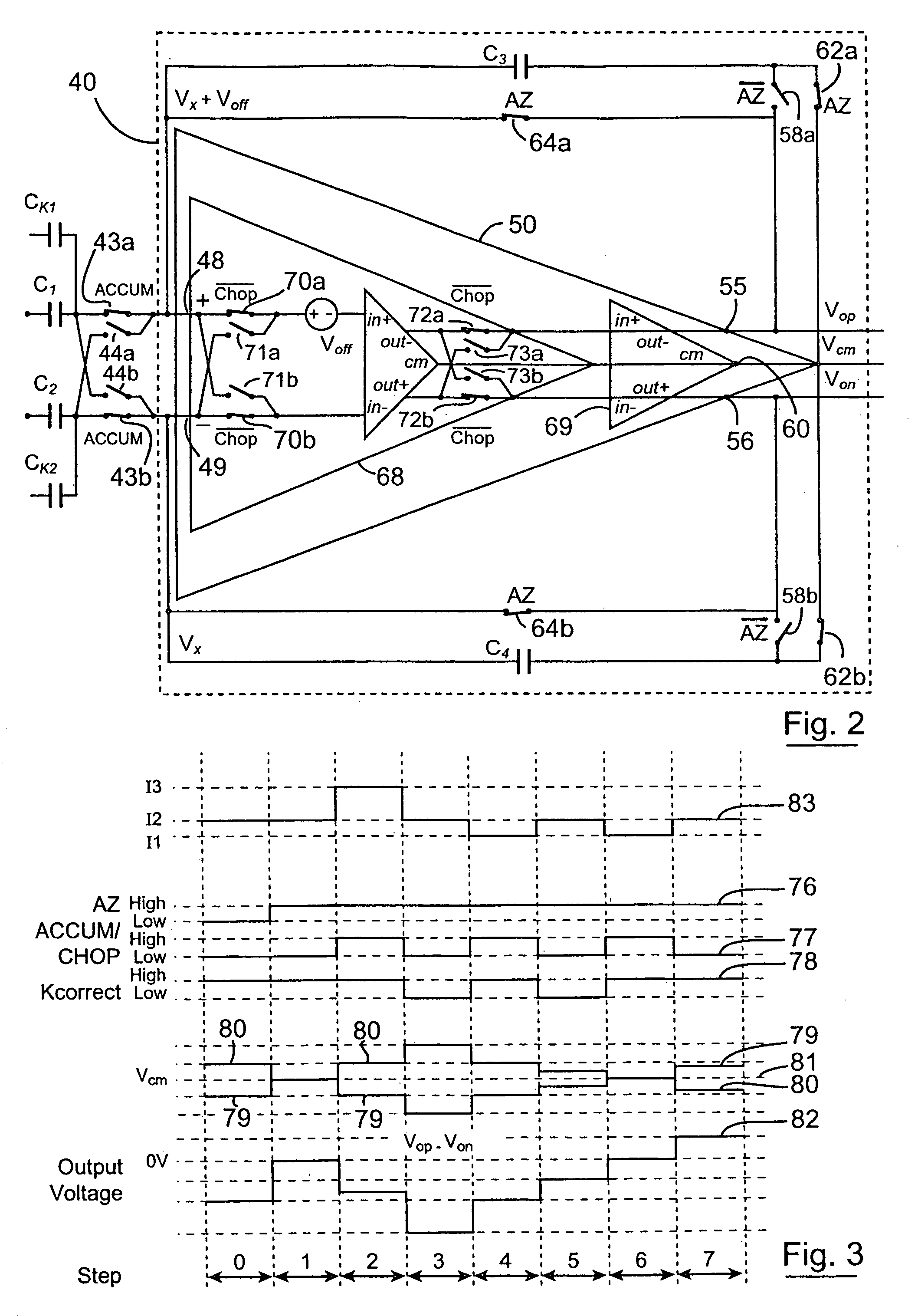Method and a measuring circuit for determining temperature from a PN junction temperature sensor, and a temperature sensing circuit comprising the measuring circuit and a PN junction
a temperature sensor and measuring circuit technology, applied in heat measurement, instruments, pulse techniques, etc., can solve the problems of inability to measure the base/emitter voltage of the transistor, failure to cancel the effect of current path series resistance in the output voltage, and inability to use low voltage switched current temperature sensing circuits with more than two excitation currents. , to achieve the effect of facilitating the measurement of the operating temperature of the integrated circuit, reducing the number of pins, and accurate representation of the temperatur
- Summary
- Abstract
- Description
- Claims
- Application Information
AI Technical Summary
Benefits of technology
Problems solved by technology
Method used
Image
Examples
Embodiment Construction
[0118]Referring to the drawings, there is illustrated a switched current temperature sensing circuit according to the invention, indicated generally by the reference numeral 1, for determining temperature sensed by a temperature sensor 2, which comprises a PN junction. In this embodiment of the invention the PN junction of the sensor 2 is provided by a PNP substrate bipolar measuring transistor Q1, the collector of which is connected to a fixed voltage, in this case ground, and which is formed by a CMOS process. The measuring transistor Q1 is selected so that its current gain is substantially constant over its operating range of collector currents, in order to avoid current gain errors in the measured results. In this embodiment of the invention the measuring transistor Q1 is selected so that the current gain variation over the operating range of the collector currents is less than 1%. A measuring circuit 5 also according to the invention which forms a part of the temperature sensin...
PUM
 Login to View More
Login to View More Abstract
Description
Claims
Application Information
 Login to View More
Login to View More - R&D
- Intellectual Property
- Life Sciences
- Materials
- Tech Scout
- Unparalleled Data Quality
- Higher Quality Content
- 60% Fewer Hallucinations
Browse by: Latest US Patents, China's latest patents, Technical Efficacy Thesaurus, Application Domain, Technology Topic, Popular Technical Reports.
© 2025 PatSnap. All rights reserved.Legal|Privacy policy|Modern Slavery Act Transparency Statement|Sitemap|About US| Contact US: help@patsnap.com



